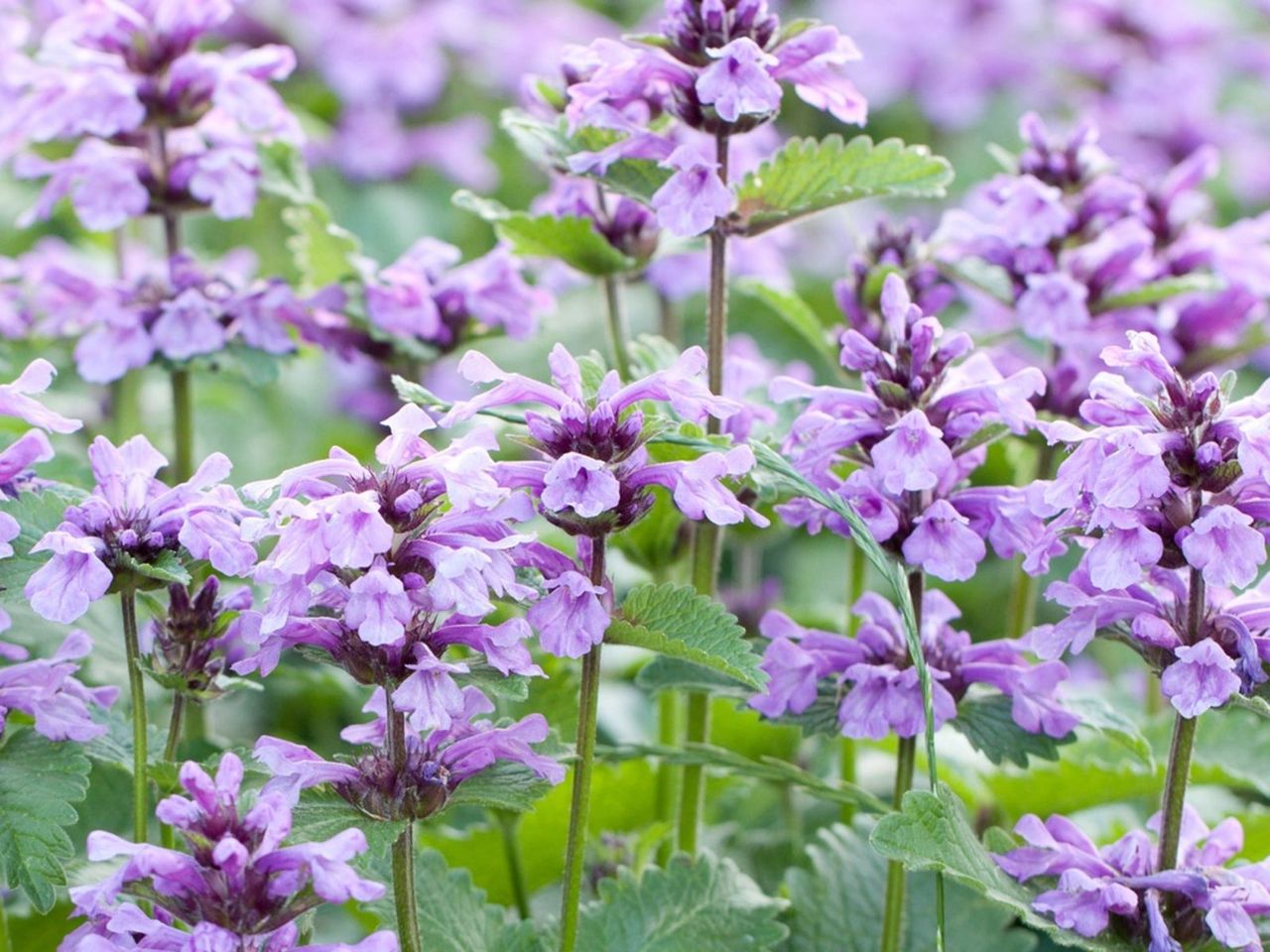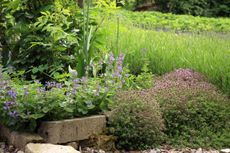Catmint Herb: How To Grow Catmint


Catmint is an aromatic herb that is commonly grown in the garden. It produces clusters of lavender-blue flowers amid mounds of gray-green foliage. This easily grown plant has an interesting history regarding its various uses in the landscape. For example, the herb is thought to have been first cultivated in the Roman town of Nepeti, where it was used as herbal tea and insect repellent. This is also believed to be the origin of its genus name, Nepeta.
Difference Between Catnip and Catmint
Many people wonder what is the difference between catnip and catmint. While basically considered the same plant as they share many of the same characteristics, there are differences between the two species. Catnip (Nepeta cataria) has less ornamental value in the garden than its catmint (Nepeta mussinii) counterpart.
Catnip is also found to be highly attractive to cats, with many of them exhibiting a naturally induced euphoria around the plant. They may nibble on it or even roll around in the foliage. This type is most suitable for "cat-friendly" gardens. If you don't want your garden overrun with felines, plant catmint instead, which is much less attractive to them.
How to Grow Catmint
The catmint herb is easy to grow. These plants are good for mass planting or edging and are suitable near vegetables as an insect deterrent — especially for aphids and Japanese beetles. Catmint can be grown in sun or partial shade with average, well-draining soil. They are even heat and drought tolerant, making them excellent plants for dry garden areas. Catmint is most often grown by seed or through division.
How & When to Plant Catmint
The seeds or divisions of the catmint plant are planted in spring. They require plenty of space too and should be spaced (or thinned) to at least a foot (31 cm.) or so apart. Overcrowded plants can lead to powdery mildew or leaf spot, especially in hot, humid climates.
Caution is needed when planting some types of catmint plants, as they can be aggressive growers. Therefore, you may want to add some edging around them. Likewise, catmint can be planted and grown in containers.
Care of Catmint
Basic care of catmint is easy. Water catmint plants regularly until they become well established. Mulch will help retain moisture and keep down weeds. Once plants are a few inches (8 cm.) tall, pinch them back to promote bushier growth.
Gardening tips, videos, info and more delivered right to your inbox!
Sign up for the Gardening Know How newsletter today and receive a free download of our DIY eBook "Bring Your Garden Indoors: 13 DIY Projects For Fall And Winter".
Catmint blooms throughout summer and fall. Deadheading spent blooms promotes additional flowering. It can also help prevent re-seeding. Faassen's catmint (Nepeta x faassenii) is sterile, however, and doesn't require deadheading. Shear the plants back to half their size in fall or following harvest.
Harvesting and Uses of Catmint Herb
Catmint can be used fresh, dried, or frozen for both culinary and herbal use. Harvest leaves as flowers begin to bloom, cutting the top leaves, stems, and flowers if desired. Spread out to dry in a cool, ventilated area and store the dried herb in an airtight container or bag to preserve its potency.
The leaves and shoots can be added to soups and sauces. Tea made from the leaves and flowers can be used for calming nerves and relieving coughs, congestion, and menstrual cramps.

Nikki Tilley has been gardening for nearly three decades. The former Senior Editor and Archivist of Gardening Know How, Nikki has also authored six gardening books.
-
 Are Poinsettias Poisonous To Cats? What You Need To Know For Happy, Healthy Felines
Are Poinsettias Poisonous To Cats? What You Need To Know For Happy, Healthy FelinesThey have the potential to brighten up homes long after the holidays, but are poinsettias poisonous to cats? Make sure you read this before mixing the two!
By Susan Albert
-
 6 Enchanting Blue Flowers You Can Start From Seed In Winter To Chase Away The Blues
6 Enchanting Blue Flowers You Can Start From Seed In Winter To Chase Away The BluesFill your garden with these captivating blue flowers come spring and summer by making a little head start in winter.
By Melanie Griffiths
